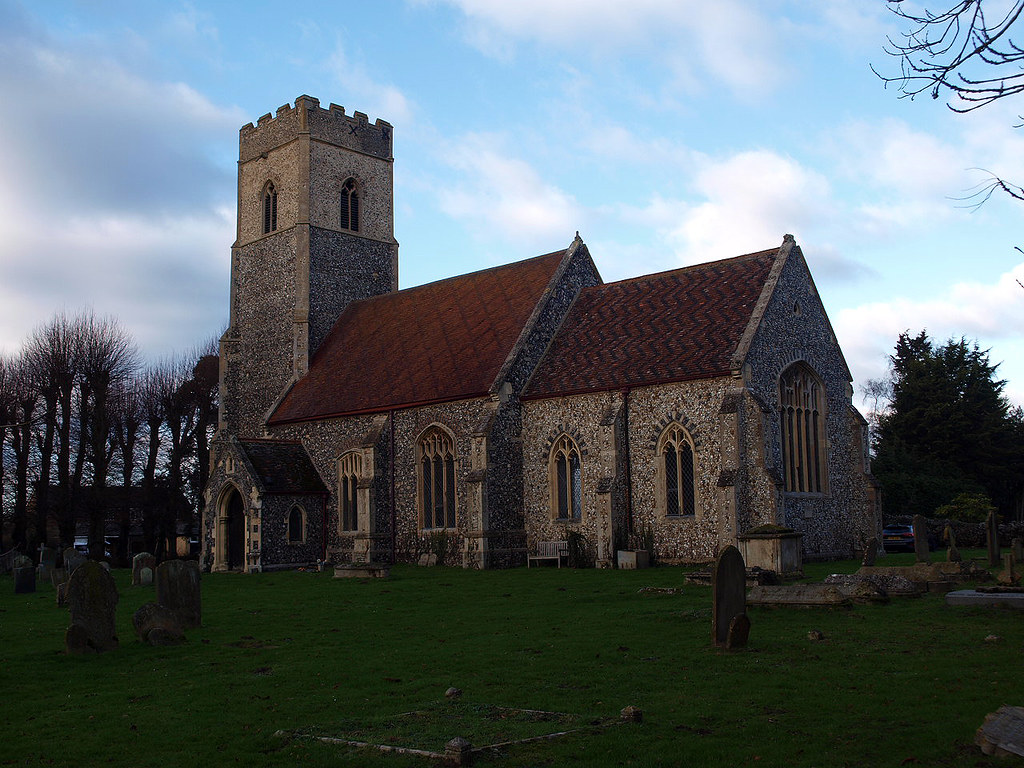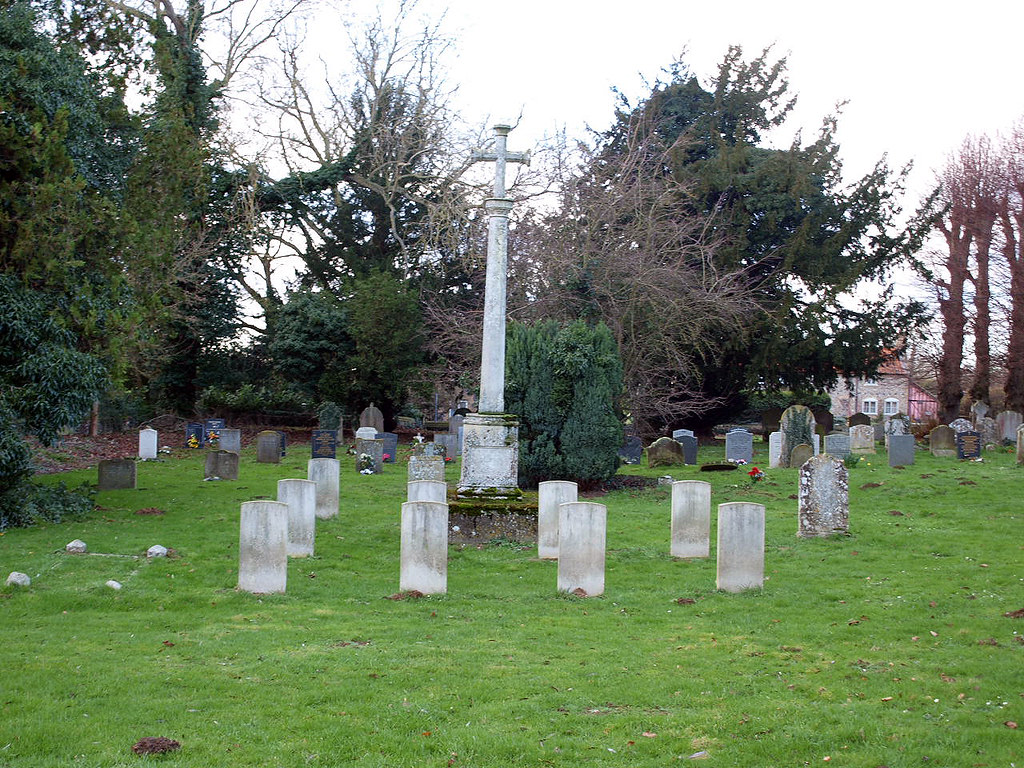I think this is a clever, and innovative, way to make the building, and perhaps the CoE itself, relevant to the community - I suspect that without the café this would be a redundant church. I did wonder, however, whether it should be included as accessible; I didn't have the nerve to enter the nave whilst it was so busy but I could have done, so that, in my book, makes it open. Having said that I don't think I missed much.
ST BARTHOLOMEW. Built in 1861 in the local style, with the use of old parts, especially the tower arch on two head corbels. (The old tower was probably begun c. 1455, according to a will of that year. ARA) - STAINED GLASS. Some C15 glass in the S porch.
INGHAM. You cannot lose your way in Ingham, for it has only one street, where a sheltered well, the rectory, and the church keep company. Its fine tower has two heads looking down from its arch into the light and lofty church made new last century. The chancel roof rests on winged angels and has old carved spandrels, and some of the benches have carved poppyheads. There is a little old glass in the vestry showing the Madonna and winged figures, and behind the pulpit are the roodloft stairs. The low font is 13th century. A tablet of gold mosaic on a wall is in memory of a rector’s son who fell in France in 1917. The church also remembers Robert Lowe, who was 91 when he died in 1729, having preached here for 57 years, and Henry Wakeham, rector for 49 years of last century. Between them they served this small place for 106 years.
The coming of the railway disturbed the peace of men from Roman England and relics from their graves are now treasured in Bury museum. In the churchyard are nine neat gravestones round a cross with the names of the men of this village who fell for England in the Great War.



No comments:
Post a Comment